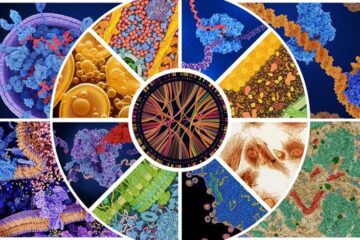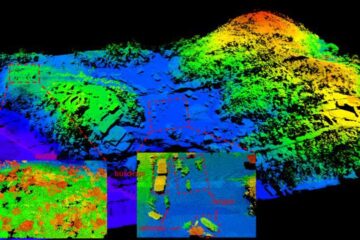SDSC Team Develops Multi-scale Simulation Software for Chemistry Research

Researchers at the San Diego Supercomputer Center at the University of California, San Diego, have developed software that greatly expands the types of multi-scale QM/MM (mixed quantum and molecular mechanical) simulations of complex chemical systems that scientists can use to design new drugs, better chemicals, or improved enzymes for biofuels production.
A paper outlining the research, titled ‘An Extensible Interface for QM/MM Molecular Dynamics Simulations with AMBER’ and conducted by members of the Walker Molecular Dynamics Lab (WMD) at SDSC, was featured on the cover of the January 15th issue of the Journal of Computational Chemistry.
Multi-scale QM/MM computational methods are crucial to advancing the understanding and solution to problems in the chemical sciences, ranging from drug design to renewable energies. This has been recognized with the award of the 2013 Nobel Prize in chemistry for the development of multi-scale models of complex chemical systems.
In QM/MM simulations, an accurate but computationally complex and thus time-consuming quantum mechanical model is used to identify important features of the electronic structure of a chemically relevant region. This is required, for example, to describe photo-physical processes or chemical reactions in the active site of enzymes. Effects of the surrounding environment are then included with a computationally less complex classical MM model.
“QM/MM simulations are computationally very demanding compared to purely classical MM simulations,” said Ross C. Walker, an SDSC research professor and adjunct associate professor in UC San Diego's Department of Chemistry and Biochemistry. “Access to SDSC's Trestles and Gordon supercomputers and their fast turnaround times were essential to our work. We ran a large amount of jobs to test and validate our implementation at various stages, as well as a large-scale simulation to demonstrate a practical application.”
“Our software enables QM/MM simulations with a variety of advanced quantum mechanical models, and by integrating it with the popular AMBER molecular simulation package, which is used by hundreds of academic and industrial research labs, we can reach a very large user base”, said lead author Andreas W. Goetz, a research scientist with SDSC and expert in multi-scale modeling. “We’re looking forward to many exciting applications that will help scientists in computational chemistry and biophysics understand and predict the behavior of molecular systems at a fundamental level.”
Authors of the new study include SDSC's Goetz and Walker as well as Matthew A. Clark, who developed part of the software during his internship with Walker and Goetz, as part of SDSC’s Research Experience for High School Students (REHS) program and later as an undergraduate research intern in the WMD lab.
Media Contact
Jan Zverina, 858-534-5111, jzverina@sdsc.edu
Secondary media contact:
Warren R. Froelich, 858 822-3622, froelich@sdsc.edu
Media Contact
More Information:
http://www.sdsc.eduAll latest news from the category: Life Sciences and Chemistry
Articles and reports from the Life Sciences and chemistry area deal with applied and basic research into modern biology, chemistry and human medicine.
Valuable information can be found on a range of life sciences fields including bacteriology, biochemistry, bionics, bioinformatics, biophysics, biotechnology, genetics, geobotany, human biology, marine biology, microbiology, molecular biology, cellular biology, zoology, bioinorganic chemistry, microchemistry and environmental chemistry.
Newest articles

A universal framework for spatial biology
SpatialData is a freely accessible tool to unify and integrate data from different omics technologies accounting for spatial information, which can provide holistic insights into health and disease. Biological processes…

How complex biological processes arise
A $20 million grant from the U.S. National Science Foundation (NSF) will support the establishment and operation of the National Synthesis Center for Emergence in the Molecular and Cellular Sciences (NCEMS) at…

Airborne single-photon lidar system achieves high-resolution 3D imaging
Compact, low-power system opens doors for photon-efficient drone and satellite-based environmental monitoring and mapping. Researchers have developed a compact and lightweight single-photon airborne lidar system that can acquire high-resolution 3D…





















